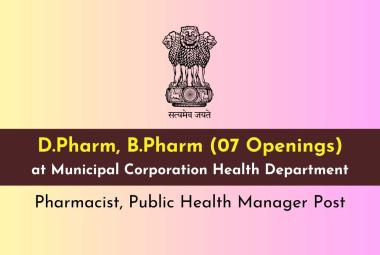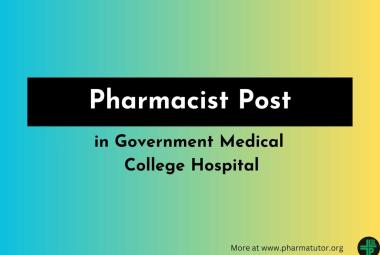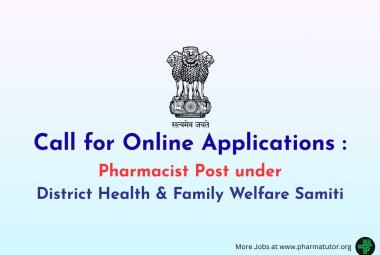101) Bioavailability of a drug is
1. Fractional extent to which a dose of drug reaches its site of action
2. Time taken to reach maximum concentration
3. Concentration of a drug in liver
4. Amount of drug metabolised in the liver
102) With regard to use of Methotrexate which of the following is not true
1. It is used in some cancers
2. It is used as a pain killer
3. It is used in some chronic inflammatory conditions like rheumatoid arthritis
4. It is used as an immunosuppressant agent
103) The drug Amphetamine
1. Can be dispensed over the counter (OTC) without prescription
2. Is a CNS depressant
3. Is a Scheduled Drug
4. Doesn't have any abuse potential
104) Extra precautions are to be taken while dispensing the following drugs
1. Sound alike and Look alike drugs
2. Narcotic drugs
3. Scheduled drugs
4. All of the above
105) Herbal medicines
1. Are Completely safe without any side effects
2. Does not have any effect on the use of modern medicines
3. Can have dangerous interactions with some drugs
4. Doesn't require any further scientific studies
106) A physician orders for SO mg of Gentamycin T I D for 3 days. How many 40mg/ml 2ml vials should be dispensed?
1. 12 vials
2. 15 Vials
3. 18 vials
4. 20 vials
107) Which of following drug is abused by athletes as a doping agent
1. Benzodiazepines
2. Antipsychotics
3. Nandrolone
4. Phenobarbitone
108) Directly Observed Treatment Short Course (DOTS) is a strategy employed in
1. Cancer
2. Tuberculosis
3. Malaria
4. Dengue
109) Which of the following disorder is caused by the deficiency of Vitamin C?
1. Rickets
2. Scurvy
3. Night Blindness
4. Restlessness
110) What do the alpha cells of pancreas secrete?
1. Pancreatin
2. Gastric Juice
3. Insulin
4. Glucagon
111) Carotenoids are precursors of which of following vitamin?
1. Vitamin A
2. Vitamin B6
3. Vitamin C
4. Vitamin E
112) Muscarine mimics the action of which of the following?
1. Serotonin
2. Atropine
3. Acetylcholine
4. None of the above
113) The multiple forms of the same enzyme are known as
1. Coenzymes
2. Isoenzymes
3. Apoenzymes
4. Holoenzymes
114) Vitamin containing steroidal moiety is:
1. Vitamin D
2. Vitamin A
3. Vitamin E
4. Vitamin B1
115) The aminoacids that cannot be synthesized in the body and must be supplied in the diet are known as
1. Alicyclic compounds
2. Aliphatic compounds
3. Essential Amino acids
4. Aromatic amino acids
116) What is the process of breakdown of glycogen in to glucose known as?
1. Glycogenesis
2. Glycolysis
3. Glycogenolysis
4. Gluconeogenesis
117) mThe deficiency of which of the following vitamins results in Rickets?
1. Vitamin E
2. Vitamin K
3. Vitamin D
4. Vitamin B6
118) The botanical name of Sarpagandha is
1. Rauwolfia serpentine
2. Atropine atropicana
3. Plumeria rubra
4. Cantharanthus roseus
119) From which of the following sources is Quimdine obtained?
1. Cinchona bark
2. Cupria bark
3. Arjuna bark
4. Resna bark
120) Which of the following drugs is not classified as seed?
1. Nux vomica
2. Digitalis
3. Isabgol
4. Stropanthus
121) The pharmacological action of Ipecac is by acting as
1. CNS stimulant
2. Emetic
3. Sedative
4. Hypnotic
122) Question Label: MCQ
All of the following are mosquito borne diseases except
1. Dengue
2. Chikungunya
3. Japanese Encephalitis
4. Kyasanur Forest Disease
123) Lithium carbonate is used to treat which of the following conditions?
1. Hypothyroidism
2. Epilepsy
3. Migraines
4. Mania
124) What is the common name of chlorinated lime?
1. Bleaching powder
2. Baking powder
3. Blue vitriol
4. Copper Sulphate
125) Opium derivatives as per the Narcotic Drugs and Psychotropic Substances Act are
1. Amphetamine
2. Morphine, Codeine, Thebine
3. Ketamine
4. All of the above
ANSWERS KEY ON LAST PAGE










